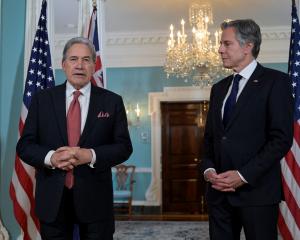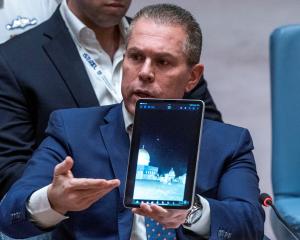Drew Hutton, of the Lock The Gate Alliance Australia, recently wrapped up his tour of the country in Gore.
On his tour, he warned of a plague sweeping rural Queensland destroying farmland, threatening water supplies, and eroding the communities that rely upon them. That plague is the coal seam gas industry, for which our Government is rolling out the red carpet.
Coal seam gas is methane, trapped underground in coal beds by millions of tonnes of water. It is accessed by pumping the water somewhere else. It is similar to shale gas, another source of methane trapped deep down and being explored for widely around New Zealand.
Largely accessed by horizontal drilling and fracking, these two new unconventional gas sources are core to the Government's energy strategy.
Coal seam gas production and exploration are relatively new in New Zealand but exploration is expanding rapidly around the country. There are 13 active exploration permits targeting coal seam gas, five exploration permit applications in process, and there is one active mining licence. The most advanced company is state-owned Solid Energy, which has been drilling for and producing coal seam gas in the Waikato since 2009. It has had a big local impact in Australia and could wreck New Zealand's goal of 90% renewable generation by 2025.
Scientific research around the world is only just catching up with these new forms of gas production. A recent paper from the Australia Institute calls for more research into emissions from an aggressively expanding coal seam gas industry.
Methane is a relatively potent greenhouse gas with a high global warming potential, 72 times that of carbon dioxide averaged over 20 years, according to the Intergovernmental Panel on Climate Change. New research from the United States shows the carbon footprint of shale gas is perhaps more than twice as great as coal on the 20-year horizon. Over the next 20 years, to ensure a stable climate, it is crucial we reduce emissions, not increase them.
Coal seam gas proponents claim that its uptake will lower emissions by replacing energy generation from coal. This may be the case overseas, but in New Zealand with about two-thirds of power generation already renewable, it could be more likely to displace new renewable energy development as it is to displace coal-fired generation. It is a concern for New Zealand after a recent run of new geothermal and wind energy projects.
Energy investors may wait to see if a gas rush arrives before committing to further renewable energy projects.
A coal seam gas background paper by the University of Technology, Sydney, highlighted: "without an effective cap on emissions there is little price incentive to go to fuels with lower emission profiles than gas, and the intensive development of unconventional gas resources may simply provide a further cheap source of fossil fuels and divert investment from lower emission energy options, such as renewable energy and increasing energy efficiency".
There is no reason to believe this will be any different in New Zealand.
New Zealand has a choice. At the moment generous tax write-offs, low royalty rates, and an ineffective Emissions Trading Scheme pricing of carbon at $NZ5 a tonne are just some of the ways the Government is prioritising fossil fuels over renewable energy. Instead, the smart money should be on renewable energy.
In 2010, international investment in renewables first outstripped fossil fuels, and the global clean energy market has been forecast to reach an annual value of $590 billion to $800 billion by 2015. Investment in renewables means more than just reducing emissions and environmental harm.
Investment in renewable energy also means new high-value jobs.
Mr Hutton has told rural communities how the coal seam gas industry has been bad for agricultural communities in Australia and for the climate.
Let's also remember we have good economic opportunities in clean energy that comes with no environmental risks.












